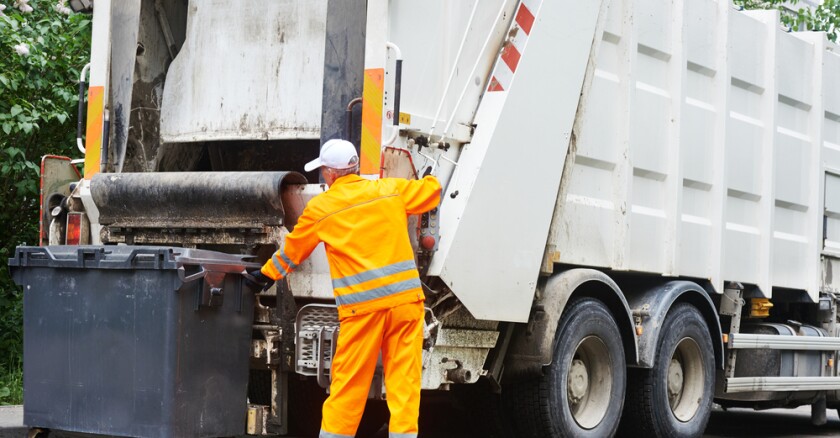“It’s made a huge difference in our operations. We are able to see a halo around the vehicles,” said David Bennett, director of solid waste in Scottsdale, Ariz., explaining how dashcam technology is offering expanded insights into his department’s operations.
The solid waste department installed tech from Samsara about four months ago, which uses a network of cameras, artificial intelligence and other sensors to monitor the entire environment around and inside garbage collection vehicles. The data is proving to be a vital ingredient in incident investigations involving accidents with other vehicles, or claims by residents that a garbage truck may have caused some form of property or other damage.
“You’re not asking an employee to go out there and look at the damage and so forth. Within two or three minutes we can pull a video, look it up, and either exonerate our driver, or we have to go further than that,” Bennett said Thursday discussing his city’s use of the technology, during a webinar hosted by Samsara.
In only a few months the dashcam technology has led to a 28 percent reduction in “general liability” claims, which are incidents where residents report damage to their property by the waste collection department. It has also contributed to a 57 percent decrease in auto liability claims, Bennett said.
Within a month of installing the system, a Scottsdale garbage truck was involved in an accident where another car pulled in front of it, slammed on its brakes, and caused a rear-end accident.
“And of course, they said it was our fault,” Bennett recalled. “The video proved otherwise. And just based on that accident, the system has already paid for itself for the entire year.”
It’s not just the activity happening outside of the truck the technology is tracking. It also monitors driver behavior in areas including speed, hard braking and seatbelt usage. The AI technology is able to generate a “driver scorecard” — in effect, grading the truck operators on metrics related to safety and efficiency. The department was already using an existing rewards program for safe and efficient work, which was folded into the new Samsara system, Bennett explained.
However, getting workers to buy into the idea of a digital big brother riding shotgun “was a challenge, I’ll tell you that,” he said.
Department leadership went to employees early in the process to let them know officials were eyeing the dashcam technology, Bennett said, adding, the rationale was summed up as “we need to do this, based on the previous incidents that we had, the litigation costs. This is something we had to do.”
The system is flexible enough, Samsara officials stressed, to allow for operators to determine what metrics they want to flag and set parameters around what qualifies as normal driving behavior.
“It’s super important for you to be able to adjust the calibrations, and the sensitivities of the software to be able to actually pick up what’s normal driving behavior, verses what’s a ‘coachable moment,’” Brian Glowiak, director of public sector sales at Samsara, said during the webinar.
“As folks continue to evaluate this technology, just make sure that it’s flexible, and is conducive to your driving behaviors, and can be adjusted to the way that your drivers drive your vehicles,” he added.
The department, Bennett emphasized, does not use the technology to live-monitor activities in the cabs of each of its 55 garbage trucks, but only reviews footage after the AI technology has raised an alert. The events are reviewed by Samsara as well as the department leaders, who then determine what, if any, follow-up is needed. Fewer than 10 events a day, Bennett said, meet the threshold for events “that we have to actually manage.”









